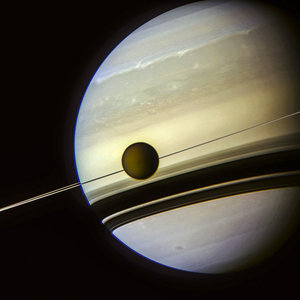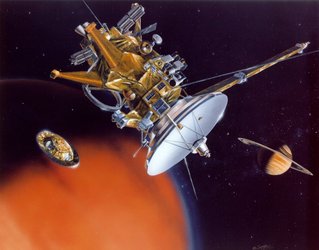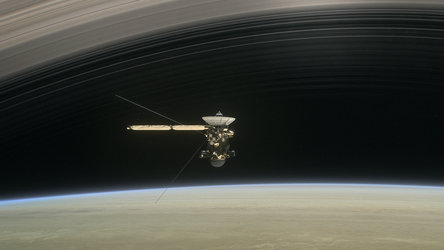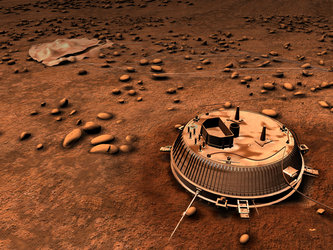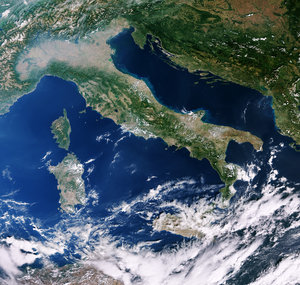Crater on Phoebe in close-up
This amazing high-resolution image of Phoebe's pitted surface was taken very near the closest approach by the NASA/ESA/ASI Cassini-Huygens spacecraft.
It shows a crater with a diameter of 13 kilometres and a debris-covered floor. Part of another crater of similar size is visible at left, as is part of a larger crater at the top and many scattered smaller craters.
The radial streaks in the crater are due to downslope movements of loose fragments from impact ejecta (material thrown out by impacts). Also seen are boulders ranging from about 50 to 300 metres in diameter.
These 'building-sized' rocks may have been excavated by large impacts, perhaps from some other region of Phoebe rather than the craters seen here. There is no visible evidence for layering of ice and regolith (or a hardened crust, or mantle) in this region, as on other parts of this moon.
Some of the relatively bright spots are from small impacts that excavated bright material from beneath the dark surface. Images like this provide information about impact and regolith processes on Phoebe.
The Cassini-Huygens mission is a co-operative project of NASA, ESA and the Italian Space Agency.



